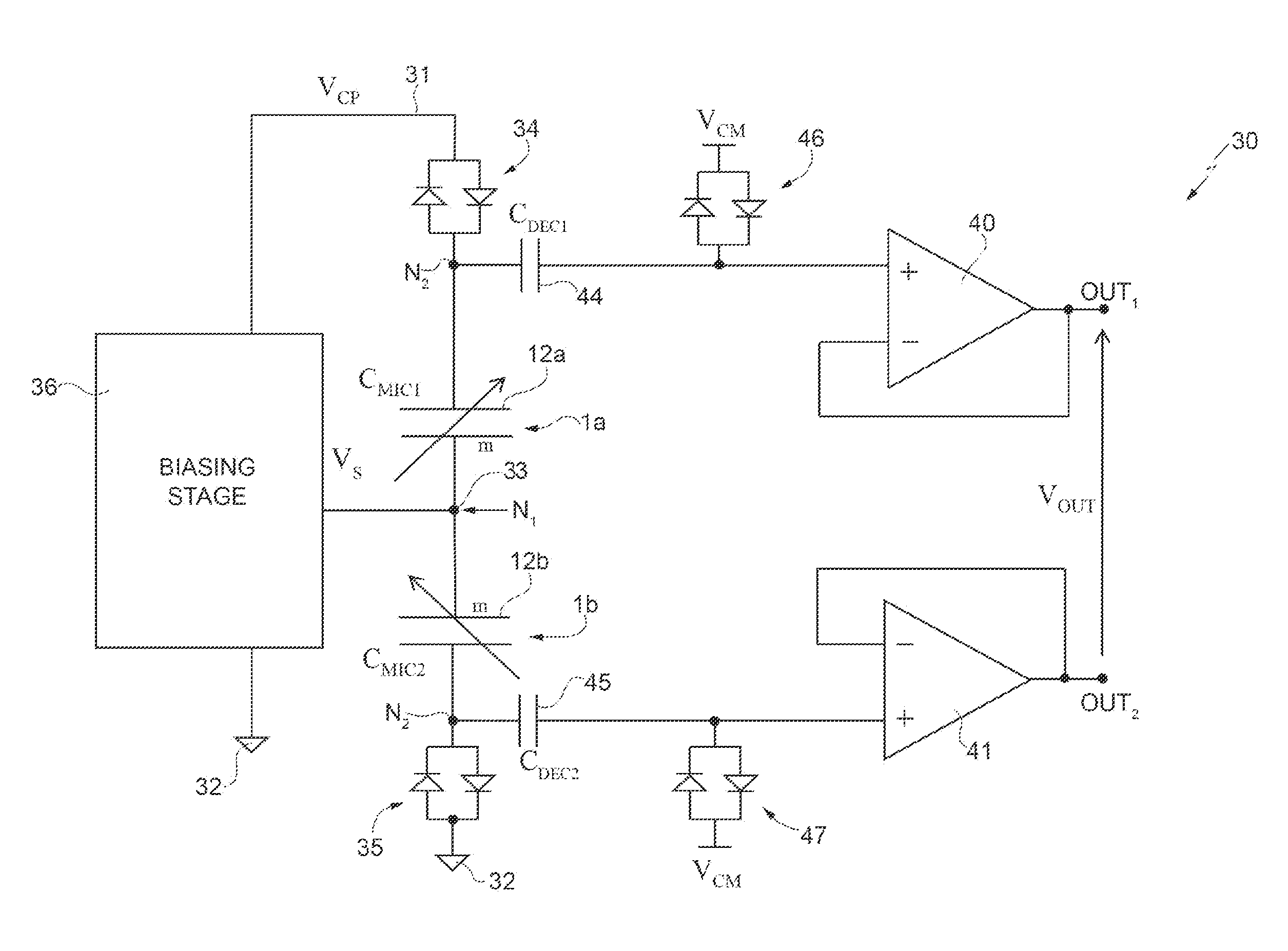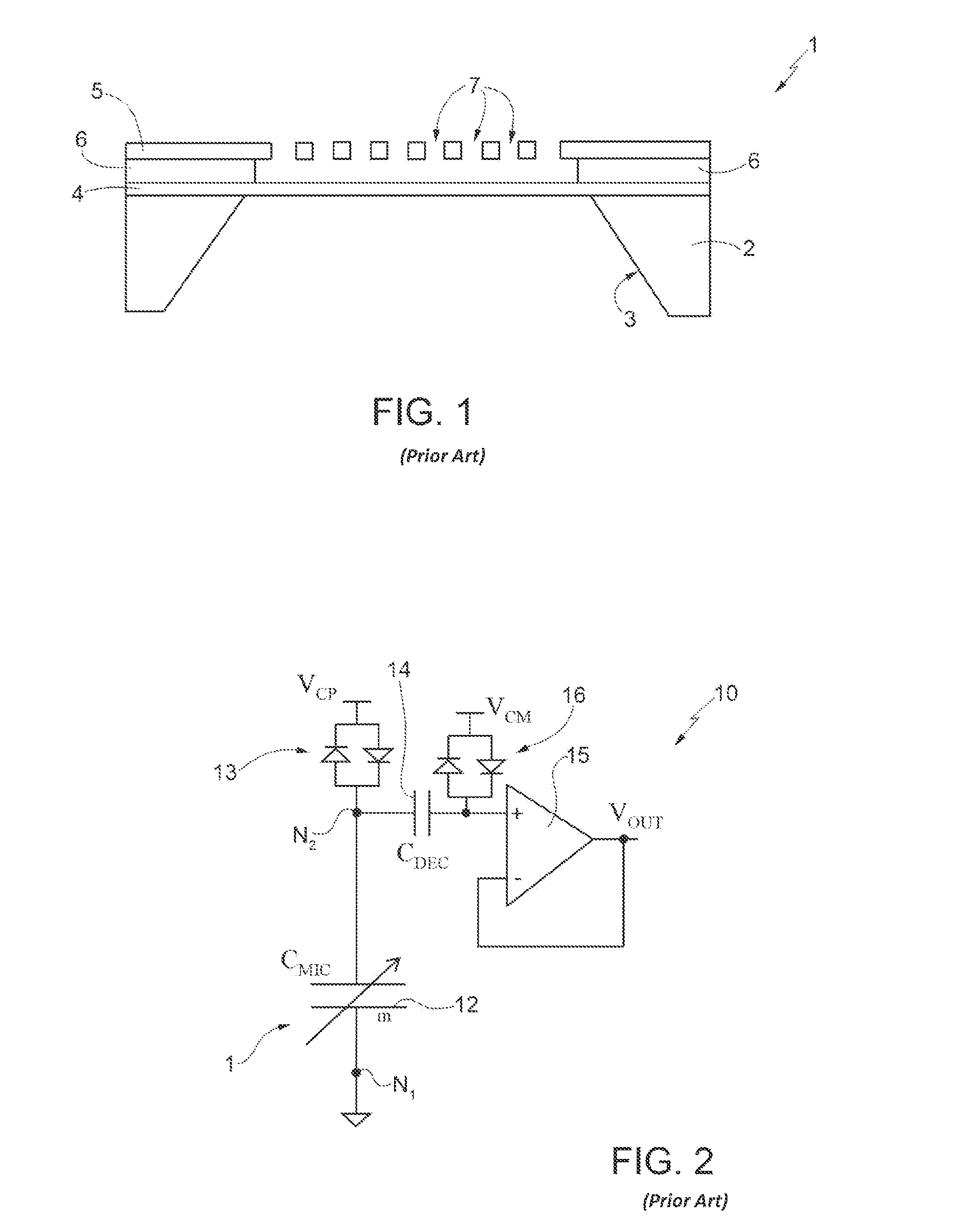Differential-type MEMS acoustic transducer
a technology of acoustic transducers and different types, applied in the direction of transducer types, electrical equipment, semiconductor electrostatic transducers, etc., can solve the problems of difficult to obtain, poor rejection of any common-mode disturbance component, and the ability to increase the signal-to-noise ratio as desired
- Summary
- Abstract
- Description
- Claims
- Application Information
AI Technical Summary
Benefits of technology
Problems solved by technology
Method used
Image
Examples
Embodiment Construction
[0040]A possible solution for increasing the signal-to-noise ratio of the MEMS acoustic transducer may envisage increase of the physical area of the transducer, i.e., the surface of the corresponding membrane and of the back plate. In fact, known statistical laws (here not discussed in detail) state that, in order to improve the signal-to-noise ratio (SNR) of an electronic component, its physical area may be increased accordingly.
[0041]For example, the signal-to-noise ratio (SNR) of a MEMS acoustic transducer of a capacitive type may be increased by approximately 3 dB by doubling the area of the corresponding membrane and of the corresponding back plate.
[0042]A possible solution may thus envisage “duplicating” or “doubling” the micromechanical structure of the MEMS acoustic transducer. However, in order to prevent problems of mechanical strength and consequent risks of failure, two micromechanical detection structures may be provided, each substantially similar to the micromechanica...
PUM
 Login to View More
Login to View More Abstract
Description
Claims
Application Information
 Login to View More
Login to View More - R&D
- Intellectual Property
- Life Sciences
- Materials
- Tech Scout
- Unparalleled Data Quality
- Higher Quality Content
- 60% Fewer Hallucinations
Browse by: Latest US Patents, China's latest patents, Technical Efficacy Thesaurus, Application Domain, Technology Topic, Popular Technical Reports.
© 2025 PatSnap. All rights reserved.Legal|Privacy policy|Modern Slavery Act Transparency Statement|Sitemap|About US| Contact US: help@patsnap.com



